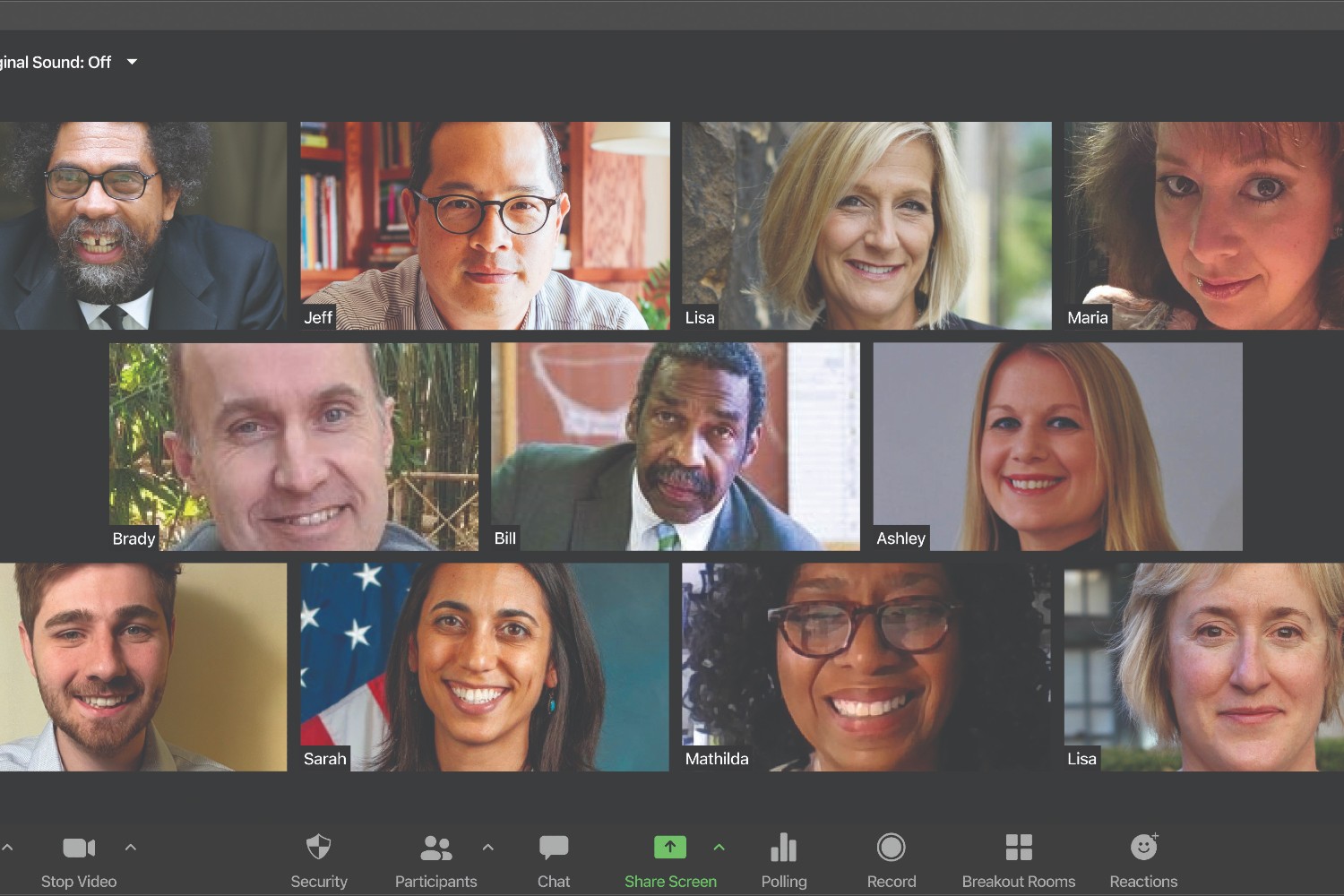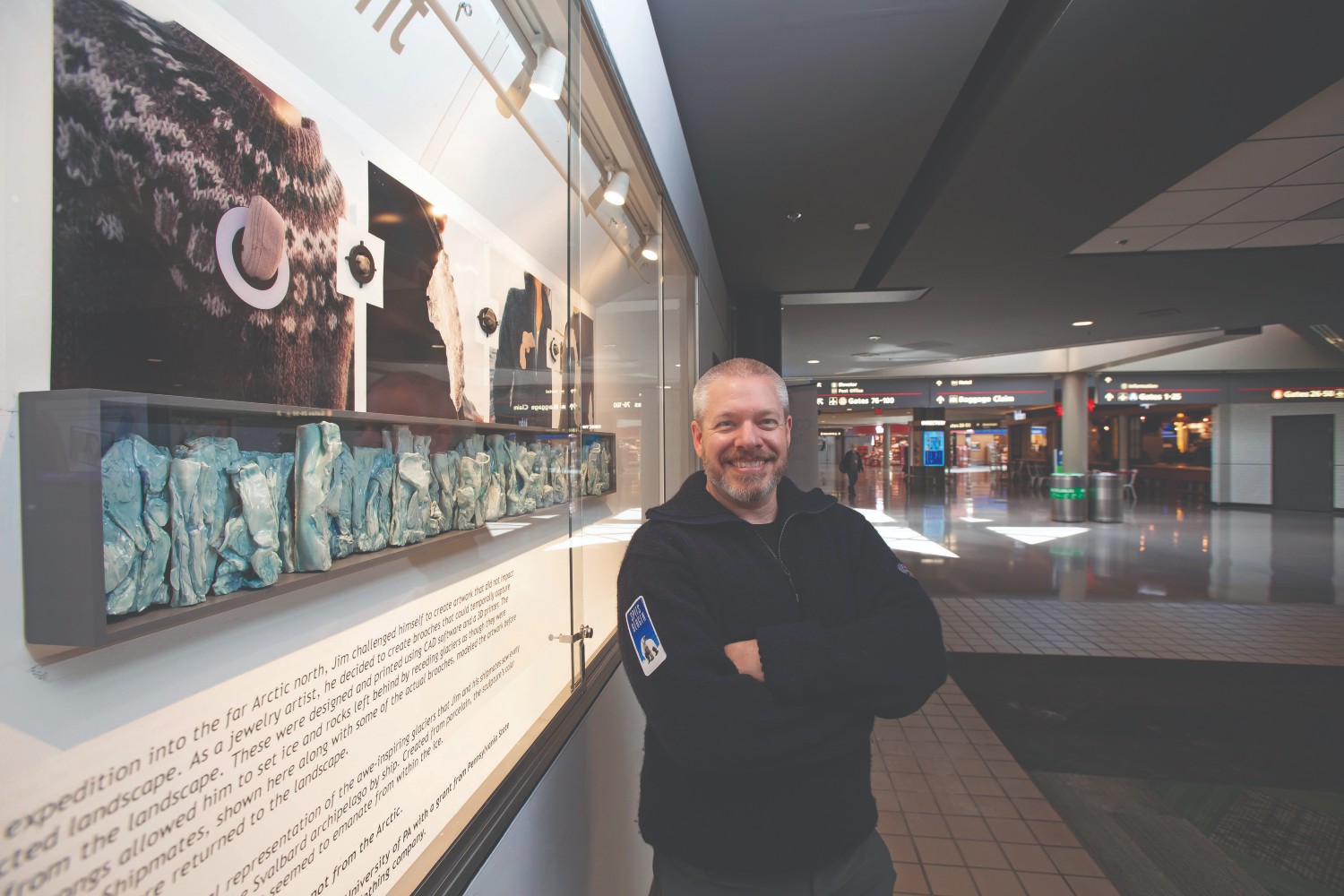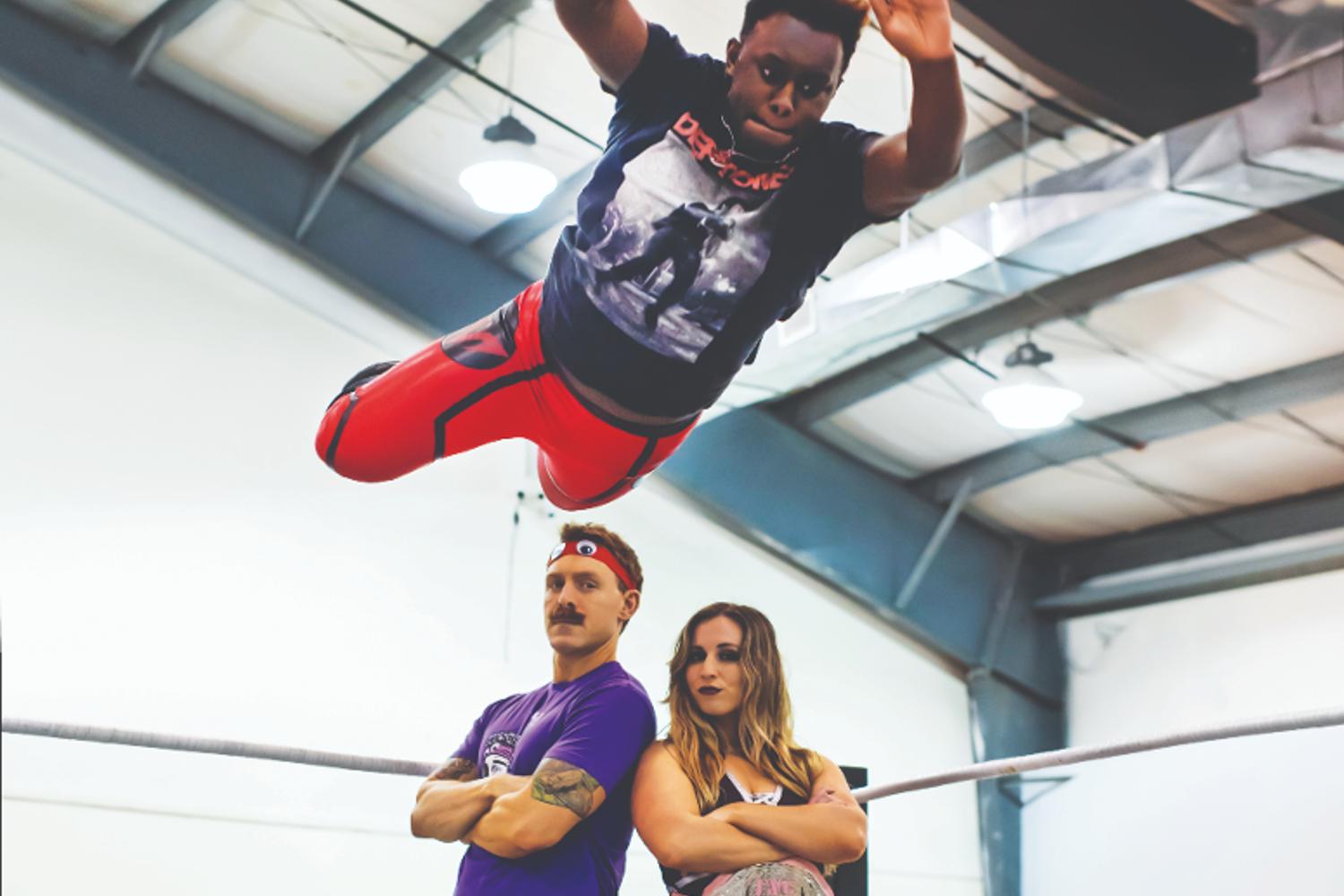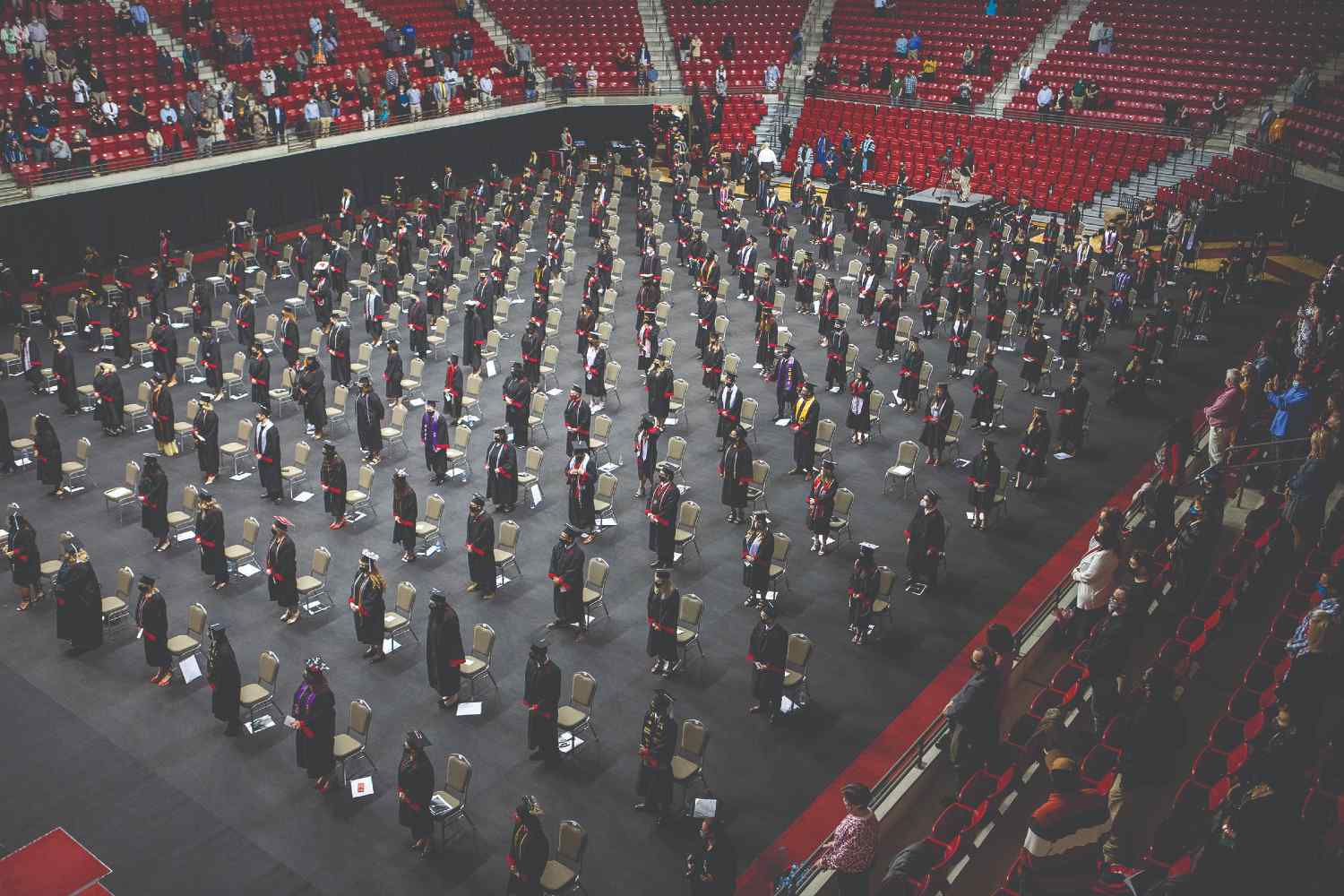Cal U’s campus was quiet. On a sunny fall morning, a handful of employees trickled in and out of Dixon Hall. A pair of students climbed the steps to Manderino Library. A family eased their car along Third Street, cellphone propped on the dashboard, and stopped for a look at the Herron fitness center.
Everyone – even the bronze Vulcan statue on the Quad and the bust of philanthropist Robert Eberly in front of the library – wore a mask.
The coronavirus changed everything at Cal U, from classes to campus visits and University operations. To mitigate risk for students and employees, the University closed its residence halls, suspended athletics competition and shifted to remote operations in March, when COVID-19 emerged as a significant threat to public health.
With the safety of the campus community uppermost in their minds, University leaders spent countless hours planning a “responsible reopening” for the fall semester, only to see case numbers surge throughout Pennsylvania and across the country in early summer.
In late July they made the decision to continue remote operations throughout the fall semester.
University President Geraldine Jones said the decision provided “a bit of certainty in these very uncertain times.”
“The COVID-19 pandemic has changed our lives – but it cannot stop you from earning your degree,” she told students. “By staying apart this fall semester, we are protecting ourselves and those we care about most, including our friends, classmates and mentors on campus.”
Yet despite the stillness on campus, plenty was going on.
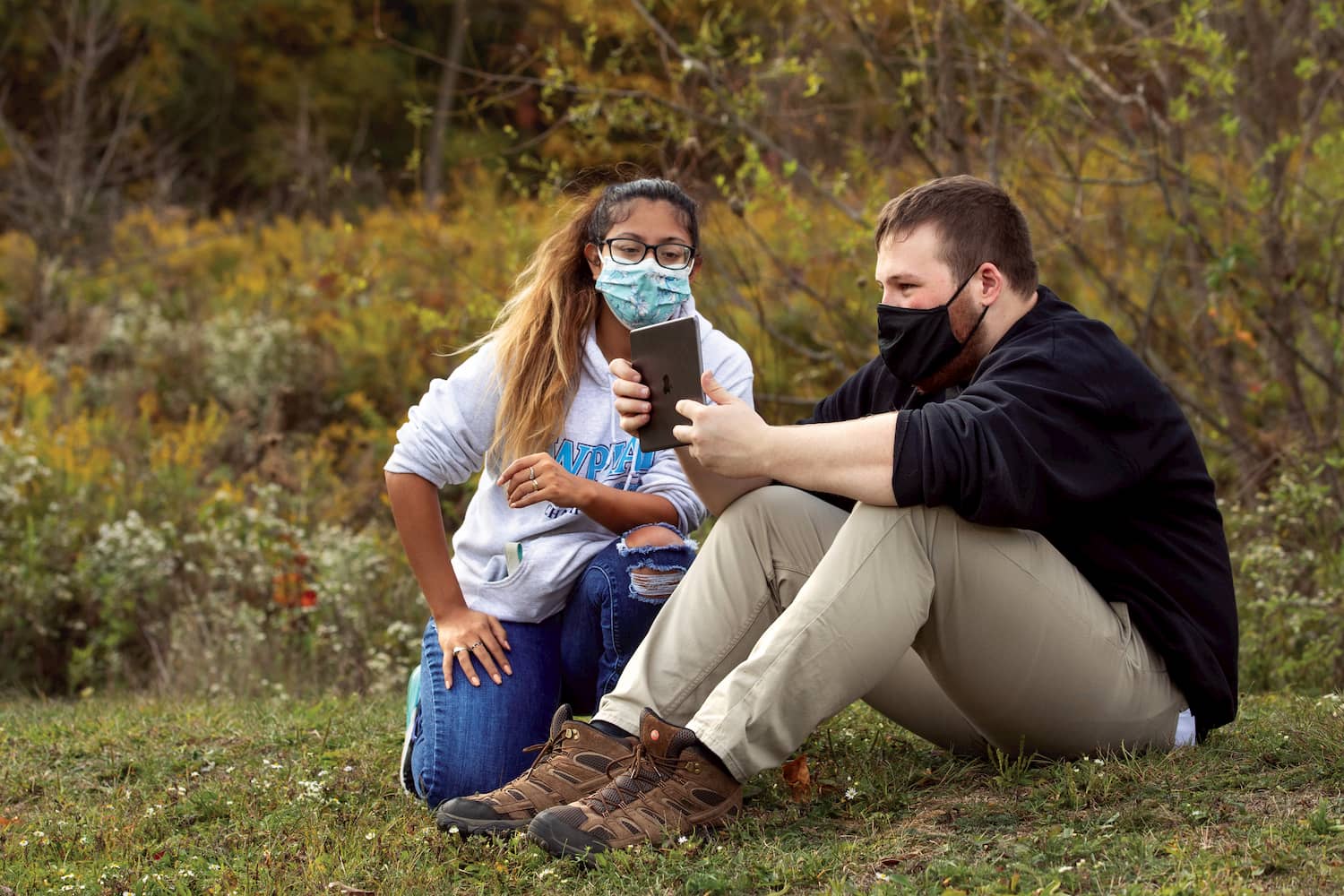
Building virtual connections
Throughout the spring and summer, staff in the Enrollment Management division had shifted their approach. With on-campus activities suspended, admissions counselors began meeting with prospective students and families on Zoom and Facebook Live.
Faculty members talked with students during virtual Open House events. Staff answered questions via texts and chats, and used their cellphones to lead families on drive-through campus tours.
Media reports predicted dramatic enrollment declines at colleges nationwide, but Cal U continued making connections, one student at a time. When fall classes began, the University’s overall enrollment had exceeded last fall’s total.
“It was truly a team effort,” says T. David Garcia, vice president for Enrollment Management.
“So many people, all across campus, contributed to bringing in a freshman class with the highest high school grade-point average in the history of Cal U and increasing its adult-learner enrollment through online graduate programs.”
This fall Cal U delivered most classes through real-time remote learning, where students meet virtually with their professor and classmates on a regular schedule, just as they would on campus. Most learners logged in from home, but computer workstations made the library a go-to spot for those lacking internet access.
As the semester began, hundreds of faculty completed advanced instruction in online teaching techniques and the nuances of D2L/Brightspace, Zoom and other digital platforms.
Interim Provost Dr. Daniel Engstrom describes remote learning as “more direct and engaging” than the type of online instruction that can be completed on a student’s own schedule.
“Asynchronous courses are ideal for adult learners who need to plan their coursework around a job or family schedule,” he explains. “But for undergraduates, in particular, remote learning provides more structure and a stronger connection with the professor.
“We surveyed students after the spring semester, when we had to make the sudden shift to virtual classes. This was the delivery method that students told us they preferred.”
Hands-on learning continued, too. Simulation software helped some nursing, anatomy and engineering technology students build new skills. Lab kits let science majors practice research techniques. And creativity blossomed as students collaborated on virtual performances and presentations.
Outside of class, Student Affairs staff made sure there were plenty of opportunities for students to find support – and to have some fun. Beginning with Welcome Weekend, they orchestrated a 30-day series of events that ran the gamut from trivia contests and online gaming to Adulting 101, a series of workshops on topics such as time management, self-care and personal finances.
“A year ago, who would have envisioned online tutoring, or a virtual career fair, or curbside delivery for library books?” President Jones asked at the fall faculty-staff convocation – the first in the University’s history to be held on Zoom.
“Within the parameters imposed by COVID-19, the essential aspects of college life continue. Our students are learning what it means to be resilient, and they are seeing how professionals in their chosen disciplines can adjust to changing circumstances.”
Unlocking the future
Fall classes ended in early December. Spring 2021 will be another “semester unlike any other.”
The pandemic’s trajectory is still evolving. Cal U continues to mitigate risk, even as leaders cautiously plan for the future. Concerns about health and safety still drive decision-making. Innovation and adaptability remain the order of the day.
When it’s time for students to return, Cal U’s campus will be ready. Buildings have been sanitized. Cameras are poised to beam on-campus lessons to students who prefer to log in from afar. Desks sit 6 feet apart, and branded masks are waiting.
Near a hand sanitizer dispenser, a cartoon image of mascot Blaze peeks from behind a face covering, reminding everyone to protect themselves and those around them.
“These are turbulent times,” says President Jones. “We have learned so much this fall, and we will put that experience to use. I have no doubt that in the end, we will emerge stronger, smarter and more resilient.”


